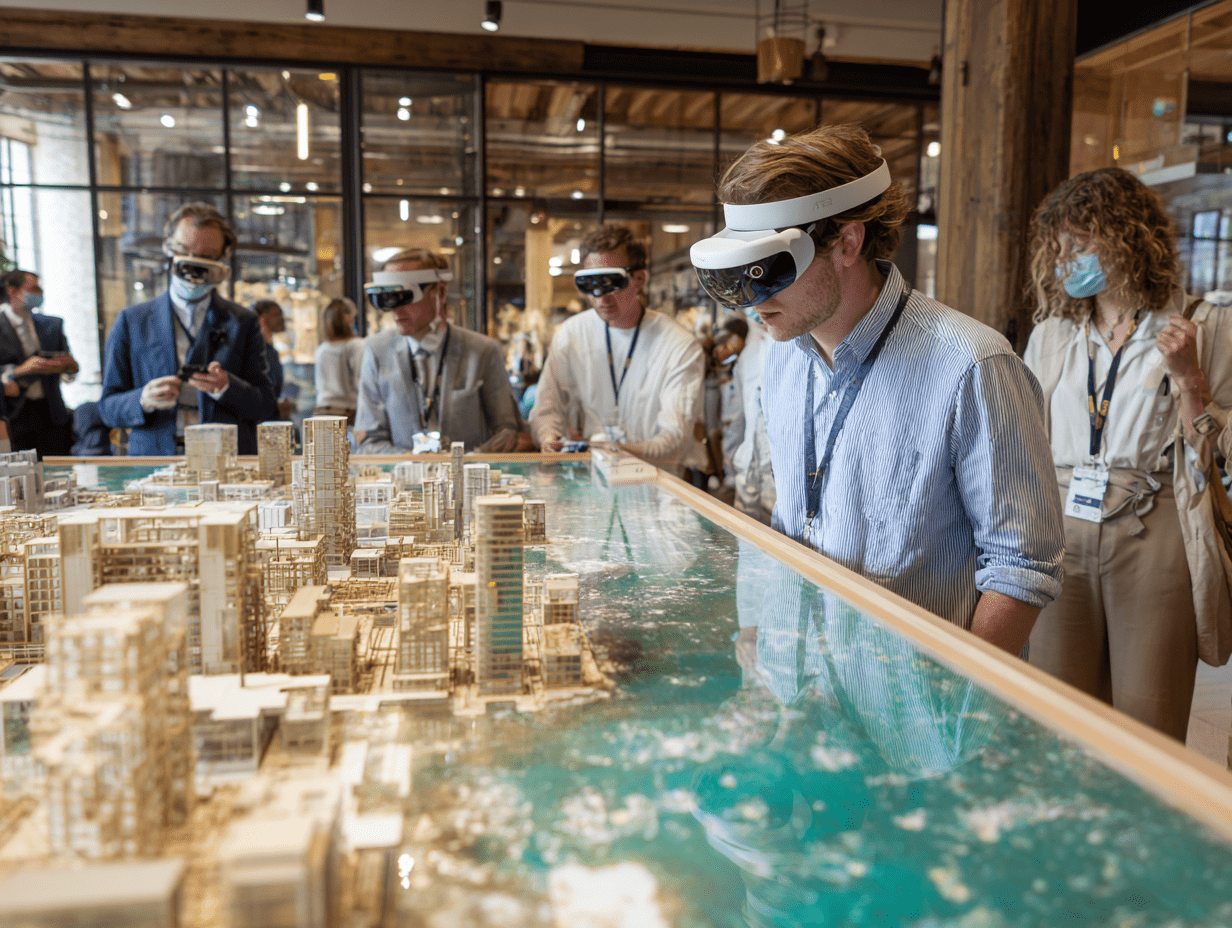- Home
- Articles
- Architectural Portfolio
- Architectral Presentation
- Inspirational Stories
- Architecture News
- Visualization
- BIM Industry
- Facade Design
- Parametric Design
- Career
- Landscape Architecture
- Construction
- Artificial Intelligence
- Sketching
- Design Softwares
- Diagrams
- Writing
- Architectural Tips
- Sustainability
- Courses
- Concept
- Technology
- History & Heritage
- Future of Architecture
- Guides & How-To
- Art & Culture
- Projects
- Interior Design
- Competitions
- Jobs
- Store
- Tools
- More
- Home
- Articles
- Architectural Portfolio
- Architectral Presentation
- Inspirational Stories
- Architecture News
- Visualization
- BIM Industry
- Facade Design
- Parametric Design
- Career
- Landscape Architecture
- Construction
- Artificial Intelligence
- Sketching
- Design Softwares
- Diagrams
- Writing
- Architectural Tips
- Sustainability
- Courses
- Concept
- Technology
- History & Heritage
- Future of Architecture
- Guides & How-To
- Art & Culture
- Projects
- Interior Design
- Competitions
- Jobs
- Store
- Tools
- More
Crafting Architecture Plans With AI: Game-Changing Tools and Techniques

In the intricate world of architectural design, the plan stands as a cornerstone, shaping spaces through a blend of creativity and organization. But what if we told you that this process is being revolutionized? That’s right, the integration of Artificial Intelligence (AI) tools in architectural planning is not just a trend, it’s a transformative force that’s ushering in a new era of innovation.
AI is bringing a multifaceted set of capabilities to the table. It’s not only expediting the design process but also enhancing the overall efficiency and sustainability of architectural proposals. From exploring a multitude of creative possibilities through generative design to predicting energy performance with sophisticated simulations, AI is empowering architects to make informed decisions and optimize their designs. And the best part? This doesn’t come at the cost of their imaginative exploration. Stay tuned as we delve deeper into this exciting topic.

Table of Contents
ToggleUnderstanding the Role of Artificial Intelligence in Architecture
Artificial Intelligence (AI) is indisputably a game changing technology that is significantly impacting the architectural world. It’s importance and potential can’t be understated as it drastically transforms the design process, simplifies complex tasks, and facilitates the creation of more efficient and sustainable architectural designs.
The Need for AI in Architecture
In traditional architectural planning, generating a detailed floor plan in both 2D and 3D can be a time-intensive task requiring meticulous manual measurement. AI, such as that found in the OpalAi app, simplifies this process by automating the detection of walls, doors, windows, and other significant features. This allows architects to focus on more complex, creative aspects of their projects. AI is also integral to streamlining workflows. Traditional methods often involve juggling between different tools and programs, but AI boasts the capability to integrate seamlessly with existing architectural software, thus boosting performance and reducing assimilation issues.
Additionally, AI is able to address various design constraints and regulations while still providing innovative and visually appealing designs. This is evident in tools like Havenly and Hutch, which use AI to offer virtual visualizations of furnished spaces. By integrating AI into architecture, designers can focus on illustrating their vision without worrying about technical details, thus striking a balance between functionality, aesthetics, and clients’ requirements.

Revolutionizing Architectical Plan Creation with AI
AI’s role in creating architectural plans is of paramount importance. AI Architecture Plan Generators like Autodesk Forma allow architects to produce floor plans and room layouts using simple inputs. They can generate furniture arrangement ideas that consider a homeowner’s style preference, making it both a time-saving tool and a creative companion for architects.
The integration of AI in projects doesn’t only foster efficiency but also offers new creative pathways through informed design choices and discovering otherwise unthought-of design options. That’s precisely the aim of ClickUp, a project management tool that enables organization and tracking of projects in a seamless and efficient manner.
Artificial Intelligence is no longer just a buzzword in the architecture industry. Its integration into workflows, tools, and software solutions has expanded creative boundaries, improved efficiency, and navigated the path for sustainable designs. Absorbing the benefits of AI in architecture, it’s clear that this technology is not just merely complementary, it is deeply transformative.

Familiarizing with Artificial Intelligence (AI) Tools in Architecture
The landscape of architecture is constantly evolving, with AI technologies playing an increasingly prominent role. AI is not only influencing how we design but also empowering us to push the boundaries of what is possible. In this section, we delve deeper into the AI tools changing and shaping the landscape of architectural design and optimization.
AI Tools for Drafting Plans
AI has morphed from a passing trend to an indispensable tool for architects, aiding in creating detailed and efficient drafts. AI-powered tools like Dreamhouse AI, Finch, and Getfloorplan are pioneering this new wave.
Dreamhouse AI, for instance, is an advanced design assistant that gives users access to a Pro version with extra capabilities. It leverages AI to ensure optimal placement of furniture and décor, making it a boon for architects and interior designers.
Finch uses graph technology to optimize building designs, providing immediate feedback on building performance. Not only does it detect errors but also offers optimal solutions early, thereby paving the way for an improved design process.
Getfloorplan is an AI-powered service which lets users create detailed 2D and 3D floor plans, as well as 360 virtual tours. Users simply upload a floor plan or sketch, and the AI takes care of the rest, offering the finalized plan in under 30 minutes.

AI Tools for Design Optimization
In addition to drafting plans, AI significantly aids action on feedback and optimization of designs. Tools like HomeByMe and Finch, are perfect instances of how AI can enhance the design process.
HomeByMe harnesses the power of AI, allowing users to preview future design changes to their house from a three-dimensional perspective. It motivates users to explore their creativity by offering a myriad of colors, fabrics, and well-known brands to choose from. Additionally, it also has a feature that enables users to share their designs with family and friends, allowing them to offer their input.
Finch, on the other hand, not only helps in drafting but also optimizes designs. It aims to automate mundane tasks, thereby saving architects significant time. It instantly provides feedback on a myriad of key figures such as unit and area distribution, carbon footprint, daylight simulation, and other critical features. In addition, it allows users to design building mass in software like Revit, Rhino, and Grasshopper.
The adoption of AI tools in architectural design has brought tremendous advantages and opportunities. As we traverse this new era of tech-influenced design, it’s evident that AI’s role will only continue to grow and evolve.

Exploring AI in Smart City Design
Smart cities are an intricate blend of structures, systems, and technologies aimed at elevating the quality of life. As this urban development vision continues, artificial intelligence (AI) plays a significant role. Our focus expands into AI’s importance for reshaping cityscapes and recognizing the challenges that come with its implementation.
Importance of AI to Future Cityscape
AI technologies such as generative design, predictive analytics, and autonomous systems can fundamentally reshape urban landscapes and public spaces. For instance, generative design, a technique used by many AI tools, like ArchitectAI and DecorAI, allows architects to automate the creation of model building designs. It achieves this by iterating through numerous designs within set constraints and parameters. Generative design not only accelerates the design process but also unveils unconventional and innovative design alternatives that might otherwise be overlooked.
Besides design, AI also aids in managing cities more efficiently. One notable example, the AI tool Finch, optimizes building designs by providing immediate feedback on building performance, error detection, and optimal solutions even at early design stages. This real-time feedback system enables architects to make strategic design decisions, aids in sustainable planning, and fosters an efficiently managed cityscape.
While streamlining architectural design and city management, AI also amplifies the ecological sustainability aspect in smart city design. Through AI-powered tools, designers can calculate carbon footprints, carry out daylight simulations, and other environment-related assessments. This data-driven approach enables the creation of more resource-efficient and ecologically sustainable designs, hence playing a vital role in building environmentally aware smart cities.
Challenges of Implementing AI in Smart City Design
As promising as AI’s role in smart city design appears, it’s not without challenges. One common technical hurdle is the requirement for considerable amounts of data. For AI systems like generative design or predictive analytics to work effectively, they require vast and diverse data sets. There’s a need for high-quality data in urban planning regarding population distribution, traffic patterns, structural details, and more. Managing, securing, and properly leveraging such massive volumes of data presents a challenge.
Next, as AI is a new technology in the architecture scene, many architects and city planners may lack the necessary training to use these tools effectively. There’s a need for significant investment in training and education to bridge this knowledge gap, and for some institutions, the cost might be prohibitive. This can also run true with federal and state agencies, as well as institutions. Leveraging AI for public services and operations like city planning can drastically streamline and optimize their processes, but again, the implementation can be difficult. It is typically a good idea, especially with a landscape like AI that is constantly changing, that an AI consultant is used to best implement AI tools and programs in government and public sectors.
Lastly, ethical concerns are prevalent when it comes to AI application. Issues like privacy infringement, data ownership, and the effect of automation on job displacement come to the forefront. It’s crucial for architects, city planners, and relevant authorities to acknowledge these concerns and devise strategies to address them.

Addressing Ethical Considerations in AI Usage
Navigating the digital transformation in architecture implicates an array of ethical considerations. By carefully addressing these concerns, architects can harness artificial intelligence’s potential while safeguarding their ethical obligations.
Data Privacy and Security
Harnessing the power of AI in architecture involves the collection and analysis of vast amounts of sensitive data. Floor plans, 3D models, material usage, and client preferences provide rich data sets for AI to optimize design processes. However, these same sets of data also pose significant privacy and security risks.
Protecting this data is not just an ethical obligation, but a legal one as well. Data breaches can have severe consequences, leading to reputational damage and penalties. For example, when AI platforms like DecorAI help users generate new interior designs using room photographs, the collected data — if not protected properly — could easily be exploited. As such, architects must assure that the AI tools they use prioritize data security and comply with the data protection laws relevant to their region.
Balancing Efficiency and Job Displacement
AI’s efficiency in design processes raises another ethical concern: displacement of human labor. Platforms like Architizers Tech Directory offer a plethora of technical tools that streamline processes and increase efficiency in architectural design. In the digital revolution where “bits and bytes hold the key to automation and once unimaginable possibilities,” professionals may fear the replacement of their roles by machines.
Yet, it’s crucial to remember that AI is, at its core, a tool – one which architects can utilize to optimize their work. It does not seek to displace architects but to assist them, handling repetitive tasks and enabling professionals to focus on more creative and complex elements. Thereby, human oversight remains paramount in averting biases and affording ethical and aesthetic considerations. Thus, architects need to balance the use of AI tools with human contribution and manage the transition process thoughtfully and equitably.

Leveraging AI in Sustainable Architecture Design
In the realm of sustainable architecture design, AI’s influence is profound and far-reaching. Let’s delve into how AI-based tools prove instrumental in crafting eco-friendly building plans, using resources such as Havenly, Hutch, HomeByMe, DecorAI, and ArchitectAI.
We see Havenly leading the way as an effective online tool, fusing stellar database selection with 3D imaging technology. This combination aids homeowners to visualize their space, plan interiors, and hence design a sustainable habitat tailored to their preferences.
Proceeding to Hutch, the core differentiator is its interactive application. Homemakers snap photographs of their rooms, receive virtual projections of furnished spaces that Hutch suggests, and make modifications based on those.
Similarly, SmartDraw fast-tracks the execution of ideas into designs. With a rich library of sample files and an easy-to-use interface, users concoct unique, sustainable interiors by dragging and dropping images of furniture, appliances, and art pieces.
HomeByMe expedites the process by offering a 3D perspective of any future design changes. Its comprehensive collection consisting of thousands of color options, fabrics, and well-known brands encourages users to build sustainable designs while collaborating with family for feedback right from their gadgets.
Giving the tools a modern touch, DecorAI and ArchitectAI apply Artificial Intelligence to innovate interior design. DecorAI, the AI-powered tool, offers users up to five free design ideas for their room photographs. ArchitectAI, the first participant in AI architecture and interior design, transforms the style of building, interior images, and landscapes with just a single click.

Appreciating the Impact of AI on Architectural Creativity
Moving forward from a foundation of sustainability and ethics, we find AI’s contributions to creativity in architecture truly transformative. Utilizing intelligent tools, architects get to uncover innovative design possibilities, break normal conventions, and come up with fresh, dynamic ideas.
One perfect example is that of Havenly, an online interior design platform, which has revolutionized architecture creativity. It uses 3D imaging technology for visualizing spaces before making any purchases, not just enhancing convenience, but also broadening the vista of design enhancements. Similarly, the Hutch app takes a visually-driven approach, enabling users to virtually furnish their living spaces, opening a world of fresh creative possibilities.
Beyond these, DecorAI, a comprehensive AI-based tool, provides up to five distinct design ideas from a single photo of a room. This broad idea generation is among AI’s profound impacts on architectural creativity, maximizing options and rendering imagination virtually limitless.
On a more technical side, ArchitectAI changes the considerations of architecture and interior design, morphing photos and sketches into different styles. The capacity for one-click transformation into photorealistic renders spawns not only unique designs but also watermark authenticity that symbolizes top-tier professionalism.
Even more captivating, AI Room Planner and Dreamhouse AI further amplify this creativity. With the ability to upload room photos and receive rendered images in different styles, these AI-powered platforms have eliminated geographical boundaries, creating an array of possibilities in the architectural creative space.
In a nutshell, these AI-backed tools and platforms demystify the conventional creative barriers in architectural design, allowing architects to create grander visions with a button’s click. It’s here that we realize AI’s indentations don’t just permeate function and sustainability, they immensely refill architectural creativity.
Submit your architectural projects
Follow these steps for submission your project. Submission FormLatest Posts
AI Tools Reshaping Architectural Modeling Processes
AI tools in architectural modeling: see how generative massing, BIM automation, and...
How Virtual Architecture Is Redefining Design From Real Time Worlds to Built Impact
Discover how virtual architecture is redefining design from static sketches to immersive,...
Best AI Tools for Architects: Make Architectural Design Easier
Artificial Intelligence is reshaping architecture. Discover the best AI tools that help...
Revolutionizing Spaces: AI in Architecture of the Future
Discover how artificial intelligence is reshaping the future of architecture in this...












Leave a comment